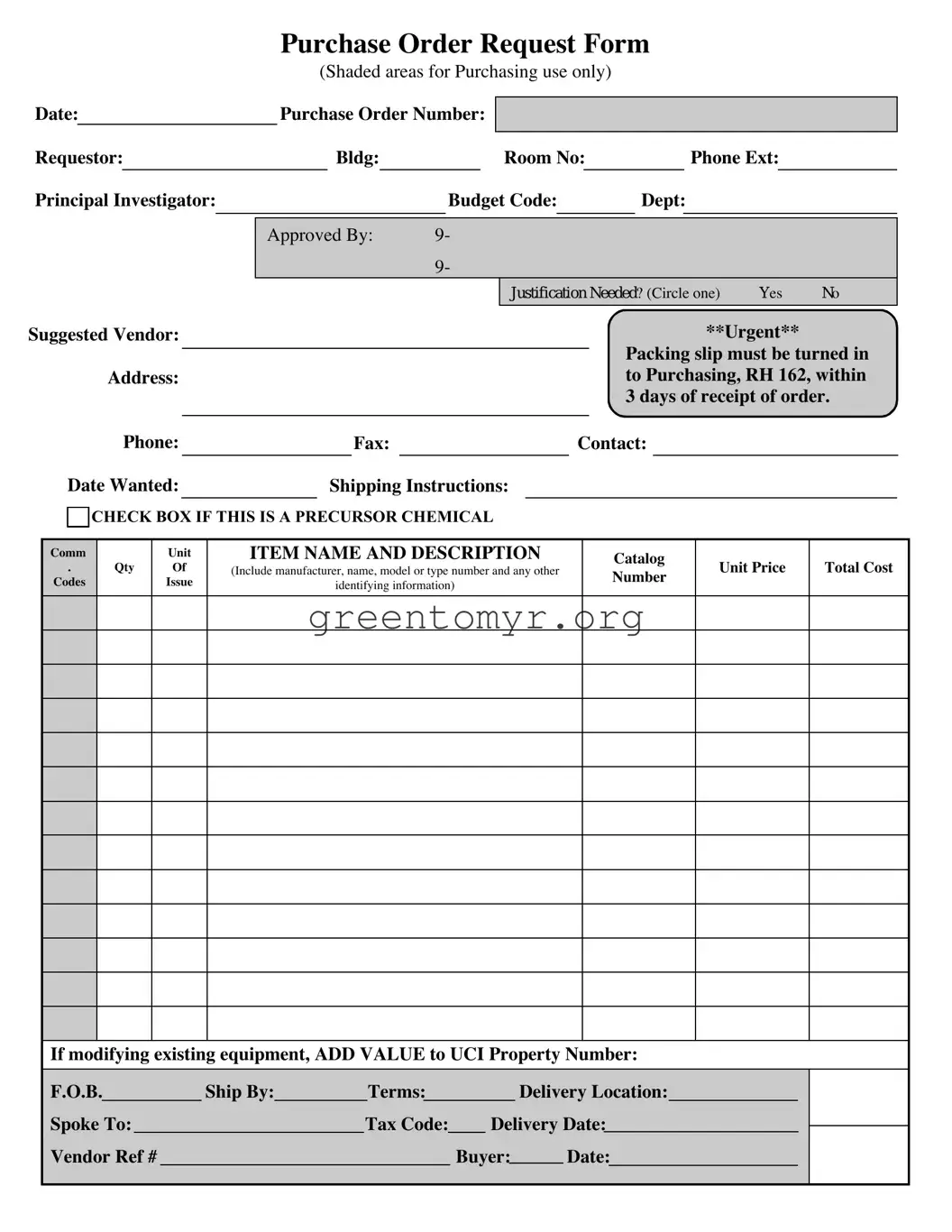Filling out a Purchase Order (PO) form can seem straightforward, but several common mistakes can lead to delays and complications. One frequent error occurs when individuals forget to include essential information. This might be the supplier’s address, contact details, or even the correct item descriptions. Each piece of information matters. Missing data can cause misunderstandings and potentially lead to receiving incorrect products.
Another common mistake is not checking the quantities required. It's easy to miscount or overlook the number of items needed. This oversight can result in over-ordering or under-ordering, both of which are costly. Companies should carefully calculate the required quantities and double-check them against their needs.
Inaccurate pricing is another frequent error. Sometimes individuals forget to update prices from previous orders or fail to confirm current pricing with suppliers. Without accurate pricing, budgets can go awry, and unexpected costs may arise. Ensure that the prices you input are up-to-date to avoid financial surprises down the line.
Failing to specify payment terms is a mistake that can have financial implications. A PO should clearly state payment expectations, including due dates and preferred methods. Without these details, suppliers may become confused about when and how to expect payment, potentially leading to disputes.
Another issue arises with the use of vague product descriptions. Generic terms can lead to significant misinterpretations. Instead of using ambiguous labels like "office supplies," specify the exact items needed, such as "10 black ink pens" or "3 reams of letter-sized paper." Clear descriptions help ensure that the order aligns closely with what is expected.
It's also important to keep track of authorization signatures. Some individuals overlook this step, which can lead to delays in processing the order. If a PO lacks required approvals, it may be returned, causing unnecessary hold-ups. Always ensure that the necessary people review and sign off on the order before submission.
Another mistake is not following company guidelines or protocols. Each organization may have its specific procedures for creating POs. Ignoring these can create confusion and result in delays. Familiarize yourself with your organization’s policies and adhere to them closely to facilitate a smooth purchasing process.
Lastly, neglecting to keep records of Purchase Orders is another misstep. After submitting a PO, it’s crucial to retain a copy for tracking purposes. This documentation can be valuable for resolving disputes, managing budgets, and ensuring timely payments. Always maintain a well-organized record of your purchase orders.

